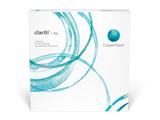Having your children’s eyes checked regularly is important. After all, vision plays a critical role in how your child learns about the world. But how early should you start?
Kids should have their first comprehensive eye exam at age 3. Unless their eye doctor suggests otherwise, they should continue to have eye exams every two years.
Eye exams at the optometrist are important even once your child starts school and has visual screenings. Visual screenings test for visual acuity (clarity and sharpness), but healthy eyes are about more than just 20-20 vision.
Other areas of vision such as color vision or focus and tracking might present problems that aren’t tested for in visual screenings.
Here are more tips to help you keep your kids’ eyes healthy.
Things to look for with kids’ vision
Observe how your child looks at things at home and at school. Some signs that your child needs to be checked for possible vision problems include:
Sitting too close to the TV or blackboard. When kids have trouble seeing, one of the first ways they naturally compensate is by getting closer or holding things nearer to their faces.
Squinting and other signs of discomfort. Vision problems can cause kids to squint, rub their eyes often, be unusually sensitive to light, or tilt their heads when looking at things.
Having trouble coordinating. Hand-eye or body-eye coordination during physical activities such as catch or biking can arise from difficulty seeing.
Showing unusually low attention or interest. Low attention and distractibility are hallmarks of attention deficit problems (ADHD), but these same symptoms accompany vision problems. Vision problems at a young age can easily lower interest in close activities such as reading, coloring or puzzles.
Taking the first trip to the eye doctor
Your child’s first visit with an optometrist, or with any doctor, can be unsettling. Setting expectations beforehand is a great way to reassure them. You can:
- Read stories where characters go to the eye doctor.
- Describe possible tasks, such as looking at pictures or E charts.
- Prepare them for the possibility of eye drops, but reassure them that there are no needles.
- Explain that there are no wrong answers to the optometrist’s questions.
Good vision habits start early. Find an eye doctor for your child, or ask your eye doctor for more tips.





